Baranof Blog & Fishing News
- Home
- Baranof News Blog
- Categories
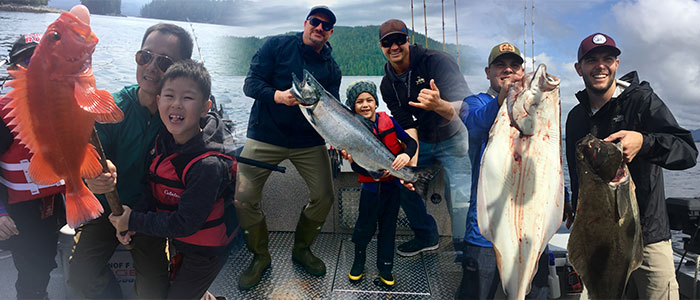
Halibut: Halibut fishing around Ketchikan has been consistent the past couple months with most of our halibut charters yielding limits or close to it - with the exception of large negative tide days the success rate has been high. The weather has been consistently nice with more days than not being sunny and warm. The water is sitting at its usual sixty-degree surface temperature, on par for this time of year. If the fishing continues on this trajectory we should see good halibut fishing sustained at least through mid-September.
Bottomfish: Lingcod is open, and for the educated angler they provide an excellent fight and a pile of good meals. Rockfish and pacific cod seem to be around in numbers and are a nice addition to a fish box.
Salmon: The pink and silver salmon have arrived in Ketchikan and have been accepted with open arms. The pinks especially have shown a strong return and the fishing has been as good as ever. Pinks are great fighters and excellent table fare when taken care of properly. Silvers have been a little more inconsistent but are being found, albeit usually farther out then the hordes of pinks. King salmon are closed for retention since August 1st, but we enjoyed some of the better King salmon fishing Baranof has seen in the past few years. Some Kings are still being caught but will have to be released for the remainder of the season.
We expect the good fishing to continue through the end of the season, and as long as the weather is kind to us we will be able to get our guests out to the most consistent and productive fishing grounds around Ketchikan. Midseason Captain's Report

Overall, it being May and still before the great migration started, Baranof Fishing got it done.
Halibut -
Sunny days and clear skies were great for getting a Southeast Alaskan tan, but for the guides it was a bit of a tough one; success rates were high, it just took some extra work. The water temperatures were a few degrees above normal, with readings being in the high 40s – mid 50s. With a little extra effort fueled by a winter of not fishing and some friendly competition amongst the guides, our clients enjoyed a higher success rate than we normally experience during the month which resulted in most of our clients hooking up to their once-in-a-lifetime halibut (we did have some king salmon success, but until June 1st it was catch and release). Since the weather was atypical in its sunny brilliance, we were able to run farther out when our normal fishing grounds didn’t prove successful. As the it got later in the month, more and more halibut started to show up as their migration brought them in from their winter spawning grounds to their summer feeding locales surrounding Ketchikan. Guests that did get a halibut on the boat may have noticed red marks on their fish’s belly; those “bruises” come from their being on the move as they travel in to start their feeding. They’re here and they’re getting fattened up for the season; we’re looking forward to continued success throughout the summer.
Salmon -
June 1st brought the anxiously awaited opening of king salmon fishing. Trolling around and hooking up to a king is the pinnacle of Ketchikan angling for some, and we’ve been doing great. Despite the concern for the salmon population, the fishing is good. In a few more weeks we will be seeing the first signs of coho and pink in the area to round out a full day of salmon fishing.
Whales -
As we’ve navigated through the waters in the area we’ve noticed the “boiling” areas of water that indicate a disturbance on the surface caused by the feed-fish. With seagulls and eagles dive bombing the water, you know for sure that there is going to be herring or other small fish around. Herring means salmon, and salmon means whales! The herring have arrived and so have the humpbacks; we’ve seen the whales chasing herring to the surface and bubble feeding as close as Mountain Point, just on the edge of town. The king salmon moving through have the orcas hanging out as well.
The fish have arrived, and we expect the excellent fishing to continue as the season progresses. Tight lines and fish on!!!
- Captain Tony Moucha
Planning on fishing out of Ketchikan this year? Better know the regulations… We have our top species listed with some insight from captain Tony Moucha to give you a guide’s perspective on the coming season, along with a link to the full ADF&G regulations book. Take a minute to check it out here as you plan your Ketchikan sport fishing adventure with Baranof.
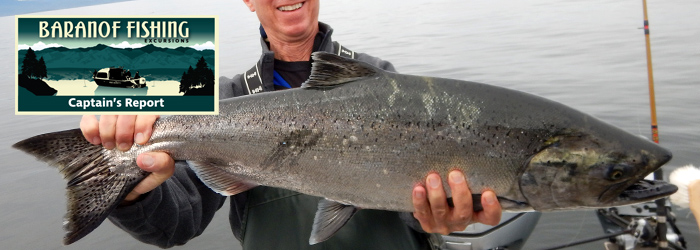
Update: King salmon sport fishing in Ketchikan opens a month early
The Alaska Department of Fish and Game just released changes to their 2018 terminal harvest area, and the relax in regulations is giving local sport fishermen a welcome sigh of relief. In 2018 the terminal harvest area has been established from Mountain Point to Carrol point where the limit will be one king salmon starting May 15th. This allows us to target and retain kings a month earlier than originally planned.
Mountain Point is roughly four miles from our dock, and while I’m sure there’ll be a whole lot of boats fishing in this area, it will be legal to keep kings 28” and over. Mountain Point has historically been a place to hold fish as they move through; given its location, it is very unlikely that Unik River kings come through the area.
The Alaska Department of Fish and Game recently released salmon regulations concerning the area around Ketchikan in which we fish. The changes are indeed historic, as these are the strictest king salmon regulations ever seen in the area. For the first time since king salmon has been protected by the state, they have closed the retention of king salmon from April 1st to June 15th. Until June 15th, king salmon will be strictly catch and release, regardless of size.
According to the ADF&G, these regulations are necessary because several runs of wild king salmon throughout Southeast Alaska are at an all-time historic low. The Unik river, in particular, is the main concern of biologists in the Ketchikan area. This river has traditionally seen the largest king salmon runs in Southern Southeast Alaska, with some runs exceeding 10,000 fish. This year biologists are expecting Unik River King salmon to number in the hundreds. These regulations are partly because the ADF&G is legally required to regulate this fishery because of a treaty with Canada.
While the news from the Unik is disappointing, hatchery fish, on the other hand, are not fairing quite so badly in our area. Southern Southeast Regional Aquaculture Association (S.S.R.A.A.) was formed and funded by commercial fishermen, and it currently operates eight hatcheries that release millions of salmon in the Southeast Alaska area every year. While several species are released, they are expecting a king salmon return which is much more optimistic than the doom and gloom of the Unik River. The travesty of the situation is that while the ADF&G is required to protect the Unik river salmon, it’s impossible to tell the difference between these wild fish and SSRAA’s hatchery fish. This creates a situation where commercial fishermen, who have invested time and money in producing these hatchery runs, are tied up at the dock because of our regulations. In 2017 king salmon news was consistently bad, with many calling it the worst year ever recorded. It was surprising that our company seemed to have its best year ever. All we can attribute it to is the lack of commercial pressure.
While it’s technically not illegal to fish for king salmon before June 15th, the fish must be released into the water; Alaska laws consider a fish brought into the boat as “retained.” This is viewed by some as ethically questionable due to the unquestionable mortality rate when playing kings close enough to pull the hooks. Needless to say, there will be no pictures of clients holding king salmon during the protection period for ethical and legal reasons. My position is, that while I would be willing to enthusiastically pursue kings before June 15th if a client had a dream of fighting a king, I’ll be recommending spending the day fishing for halibut.
There’s no way to spin this as good news for folks planning a king fishing trip in the Ketchikan area, but it’s not as bad as it may seem. While fishermen arriving within the regulated period will need to adapt their expectations, they won’t be doing it alone; please call us or email me directly if you’d like to toss around some ideas on planning your fishing charter. For those outside the restricted period, don’t be surprised if you have greater success than your friend did last year.
https://www.adfg.alaska.gov/sf/EONR/index.cfm?ADFG=region.NR&Year=2018&NRID=2534
https://ssraa.org
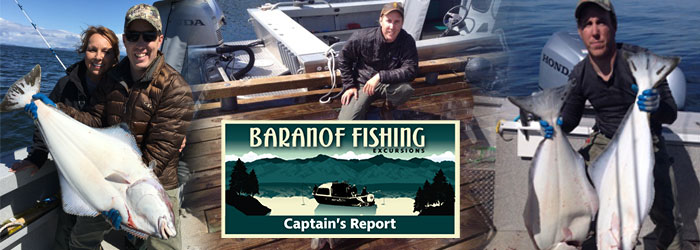
This has been an interesting year for anyone trying to follow the upcoming changes to charter halibut limits for 2018. The International Pacific Halibut Commission (IPHC) has been uncharacteristically deadlocked in determining halibut size limits for the 2018 fishing season.
In February, a 35-80 inch slot was proposed to keep the numbers within a sustainable range. Halibut over 35” would need to be released. While the sustainability of the fishery is of utmost concern for most fishermen, this cut in size limit would hurt, as lots of the halibut we catch fall within that size range. Fortunately, as of now, the commission has decided on a 38-80 inch slot for 2018, giving Ketchikan charter fishermen an additional three inches.
A three-inch difference might not seem like a lot (it equates to about a 5-pound difference in weight), but it is a big deal. Our average halibut length is around 35”, and a large percentage of halibut we catch fall within the 35”-38” range. If we couldn’t keep fish in this size range, a lot of halibut would be going back this year. This slot limit applies to guided sport halibut charters in area 2C, which is anyone fishing for halibut in Southeast Alaska and includes the Ketchikan area.
Sometimes stricter regulations tick me off; but when that happens, I need to take a step back and look at the big picture. If we don’t protect these fish, they’re not going to be around.
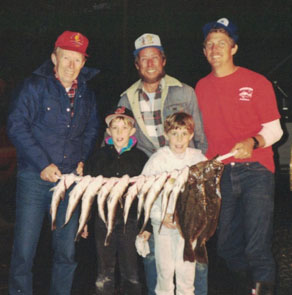
wearing the sweatpants (It was the 90’s).
Halibut have a special place in my heart. My family fished halibut before I was born and some of my earliest memories involved halibut fishing. My first time fishing halibut, my dad, my two uncles, my twin brother and I went halibut fishing out of Marina Delray in Southern California. We were fishing offshore, and though my parents tell me I was conceived on a boat in the same area, it was the first time I can remember being on the ocean. Right from the start, we had a hard time getting our lines to the bottom because a large school of mackerel was ferociously taking the bait on the way down. My brother and I were having a ball catching the little mackeral, but the older generation of fishermen were getting irritated. At one point, I remember my normally mild-mannered dad cursing a mackerel as he smacked it against the side of the boat. My brother and I were overjoyed at the non-stop action; we were catching fish, why was everyone else upset?
This went on for a few hours before we attracted the attention of a giant sea-lion who had learned to follow boats around looking for an easy meal. When the bugger grabbed a mackerel I had pulled out of the school, I had no idea what was happening, I just knew that something tremendous was pulling all my line off the reel. My uncle, knowing right away that I was on my way to getting spooled, immediately cut the line with a knife. They had to explain it to me, I didn’t know what happened.
Later on, amongst the maceral onslaught, I was reeling in another fish and the thing started aggressively pulling line off the reel. I started screaming “Cut the line! Cut the line!”. My Uncle Dave replied, “Screw you.” I was bewildered by the situation, but I started slowly gaining on whatever it was. After what seemed like a very long time, I saw an unusual fish coming up out of the emerald green deep. At that point, I knew it wasn’t another sea lion, and I was amazed when my uncle savagely gaffed it and plopped it on the deck. Everyone but me cheered. So that’s a halibut? I realized that up to that point, I didn’t even know what the heck we were fishing for. I was happy with the mackerel, but this halibut was incredible to me.
We finished the day catching a hundred or so mackerel and a nice pile of sea bass; I caught one more halibut. This time, I knew what it was as it took its first dive and started pulling drag; and I was beside myself with excitement. At the end of the day my brother may have been a little upset that I caught the two halibut of the day and hooked the only sea-lion, but I remember how proud my dad was. When we got the boat cleaned and put away, the entire family met at my grandma's where we celebrated the successful day by frying up our fresh fish.
This was my first experience halibut fishing, my first time hearing my dad swear, and the first time anyone ever said “screw you” to me. It was a monumental day of firsts, and halibut fishing has been in my blood ever since. Twenty-five years later, I still vividly remember the mackerel, the halibut, and the sea-lion; but most importantly, I remember the wonderful time we had as a family. My dad has since passed away, and my uncle has since sold his boat and moved to Arizona; but while life is constantly changing, memories like this always stay with you. For me, this encapsulates the true essence of fishing.
I hope to one day create these types of memories for my children, and it’s our regulations that keep me optimistic. Pacific halibut are fortunate that fishermen have learned from past failures and are applying their knowledge to protecting the halibut population. While there are three distinct species of halibut, (Atlantic, Pacific, and California) only the California and Pacific halibut have steady numbers. Atlantic halibut haven’t been so fortunate. Atlantic halibut are found on both sides of the Atlantic from Virginia to the United Kingdom, but are considered an endangered species due to hundreds of years of unregulated fishing; lessons learned at the expense of this species are being applied to West Coast fisheries, which have made organizations like the IPHC possible.
The International Pacific Halibut Commission (IPHC) is responsible for protecting Pacific halibut from Southern California all the way to the tip of the Aleutian Islands including; Alaska, British Columbia, Washington, Oregon, and California. This is a huge area, but it is only part of the tremendous range of the Pacific halibut. They range down the coast of Russia to the coasts of Japan. While the IPHC doesn’t include Russia or Japan at this point, it does ensure all of the fishing regulations throughout northern America work together to protect the resource. The IPHC is an international treaty amongst Canada and the US making halibut one of the few federally regulated fish in our area.
It’s no surprise to me that outdoorsmen are usually ardent conservationists; we love the wild, and most are fascinated by the vast intricacies of its inner workings. From its lifecycles to the incomprehensible food webs, the wildness of the ocean is something we can touch, feel, and eat. Nevertheless, regulations sometimes feel like a double-edged sword; while they do limit something we love, they also ensure the future of this passion for future generations.
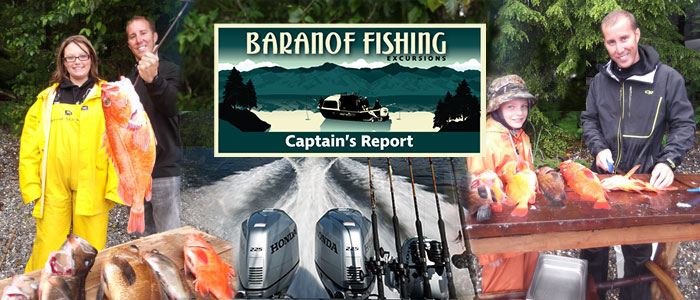
The winter of 2017 was the first winter I lived in Alaska. A California transplant, I’d been fishing in Ketchikan for the last 6 years, but I always drove up in the spring and drove down south in the fall. 2017 was our first winter away from California, and I dragged my wife up not really knowing what to expect in this place. A few weeks after the cruise ships stopped coming, and the downtown hustle and bustle slowed down to a crawl, I was amazed at how quickly and by how much this place grew on us. The warm people, the wonderfully beautiful days mixed with the violent storms, the crisp clarity after a snowstorm, and the way the community comes together in winter was like nothing we’ve ever experienced in the lower 48.
Even though my wife and I had a special winter together, springtime felt like a bit of an accomplishment. Before we stayed our first winter, my wife and I often heard “good luck surviving the winters...” but after a while, we realized that most of the people saying this have never stayed a winter in Ketchikan; and while many Ketchikan residents do complain about the weather from time to time, from my experience most wouldn’t have it any other way. This place is truly special and seeing the seasons' full circle made me love it more. We are in the middle of our second winter, and it still seems that the longer we live here, the more we love this place.
Needless to say, I am a fisherman, so when spring came around that first year I was chomping at the bit to get back on the water. Our first boat got put in towards the end of April, and that same day I grabbed my friend Tony and my ultra-light rods and went out. We were targeting rockfish so we didn’t have to go far. About half a mile from our dock, we started catching fish pretty quickly. Tony caught a copper almost immediately, and I pulled up a nice little quillback a few minutes later, completing our limit of non-pelagic rockfish. It was fun nailing a couple rockfish that quickly, but we were a little bummed it happened so fast. Non-pelagic rockfish live their entire lives down at the bottom and pulling them up to the surface rapidly cannot be a pleasant experience for them. Because of this, we didn’t want to keep catching non-pelagic rockfish if we were going to release them, so we went looking for pelagic. Pelagic rockfish are migratory in nature, and they can be found anywhere from the top of the water column down to the bottom. In fact, many times part of the school will follow the hooked fish right up to the surface, and you can see them swimming right under the boat. Sometimes leaving a hooked fish down 10-15 feet under the surface will keep the school close to the surface as they school with the hooked fish.
Tony and I didn’t have to go far to find pelagics. About a quarter mile away, we parked the boat over a large school of duskies. We were dropping 1oz. metal jigs sometimes called jigging spoons, or flutter jigs, where you use the tip of the rod to flip the lure up and down sporadically imitating a wounded baitfish. These metal jigs can be like candy for the little buggers! Fish bite the lure as it flutters down. The next time you raise the tip, the hook gets buried, and you’ve got a little fight on your hands. The pelagic duskies were hungry that evening, we caught 10, limiting out in around 20 minutes. I would chuckle, and Tony would have a big grin on his face every time we hooked up; we were having fun.
A day or two later, Chuck, Baranof’s owner, wanted to impress some friends with a meal in the Fish House. When it comes to impressing people, it’s hard to beat fresh rockfish, so I took him and his wife to my secret rockfish spot (It’s under a mile from the dock; everybody in the company knows about it at this point.). That school of duskies was still sitting on that same ledge; and using my ultra-light setups, we soon had enough to make some of the best ceviche I’ve ever had. Now, of course, saltwater fishing in Alaska is not always this successful, but the great thing about rockfish is that it often is. Chuck was so impressed by ultra-light fishing, it was easy for me to convince him that it’s a skill set we should have on our dock. I am happy to say that this winter I am working on incorporating ultra-light fishing into our fishing program. If you have any interest in giving ultra-light fishing in Ketchikan a try, please contact us ahead of time, and we can match you with a guide passionate about ultra-light fishing.
Rockfish are certainly not the biggest or the hardest fighting fish in Alaska, and they actually have somewhat of a bad reputation among local fishermen, but that’s ok with me. I feel that catching them on an ultra-light set up is one of the best-kept secrets of fishing in Alaska. Much of the bad rep comes from the fact that most fishermen in Alaska catch rockfish incidentally when targeting halibut, and they do so from 300 feet on stout halibut rods designed to lift lots of weight off the bottom. Where’s the fun in that?
What made these fishing trips so much fun was the ultra-light rods. Rockfish are similar in size to largemouth bass, and while people are fanatic about bass fishing, part of the reason is because 8 lb. test line and light duty rods are common. This enables them to feel the strength of the fish. I don’t think they’d enjoy catching bass that much if all they had was a halibut “broomstick” fishing rod, 100 lb. test line, and 32 oz. of weight.
I have found that targeting rockfish using small 1-3oz. metal jigs and sizing down the rod and fishing line, make catching rockfish a kick in the pants. Metal jigs are also fun to use because most predators in the ocean love them, and you never know what you’re going to catch. If you want a real challenge, try catching a halibut with an ultra-light setup. The little rod makes an average 20 lb. halibut seem like a beast, and they make long screaming runs with the comparatively light drag.
I have caught and I have had clients catch trophy size lingcod, halibut, and kings on an ultra-light. Chasing these serious fish on a light setup really requires the guide and the fisherman to be on the top of their game. If the drag is too tight, if there is a nick in the line, or if the fisherman tries to horse the fish in by rushing it, bad things are likely to happen. But at the same time, there really is no excuse for losing a large fish with an ultra-light setup, and I have caught halibut in the 100lbs. class with an ultra-light rod. You do need to slow down and play a fish this powerful though. You can’t just reel and reel and reel.
This year, when the winter is over, and the first boat is back in the water, I’m sure I will again feel the call of the ocean and especially the fish in it. I can already feel the joy of wrestling with that first rockfish on my ultra-light and tasting it after it’s been filleted and freshly cooked, and I’m excited that I can now share this passion with our guests. I can’t wait for the season to begin.
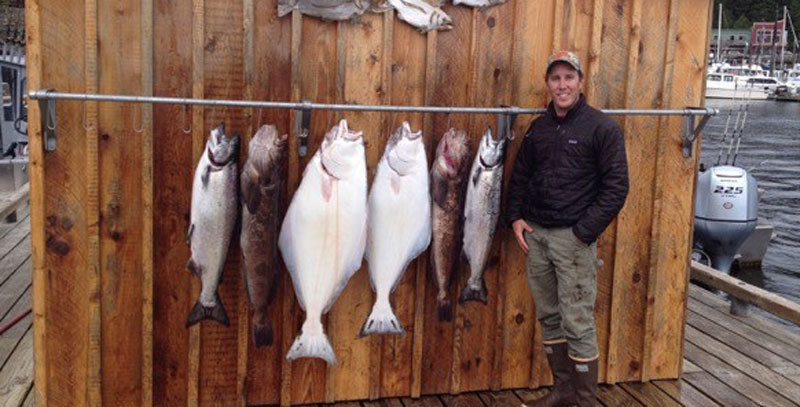
Happy New Year from Baranof and Company! We hope this letter finds you well and that you and your family enjoy a great New Year!
The 2017 season was another remarkable season for us here at Baranof, with lots of fish caught and many friends made. As I sit here in the middle of winter, I get a get a twinge of excitement whenever I think of the coming spring and the chance to get back on the water doing what I love!
As I think these happy thoughts, I have also become aware of some big changes in the fishing regulations here in Southeast Alaska for the 2018 fishing season. I thought I would share the changes, so you would know what to expect if you decide to book a fishing excursion here in Southeast Alaska for 2018.
The changes mainly affect halibut and king salmon fishing. Rockfish, silvers and pink salmon, lingcod, and yelloweye rockfish are not affected by the changes, so you can expect to catch them with all the enthusiasm of the past fishing season.
The halibut regulations are being changed in a big way in 2018, with the maximum keeping size being about 20 pounds. The king salmon forecast on the entire Pacific Coast is bleak, and the industry is bracing for what could be some very restrictive king salmon regulations coming for 2018. If you are interested in specifics on these two species, I’ve included more details below.
New Halibut Regulations
The International Pacific Halibut Commission uses a reverse slot limit to regulate the catch rate of halibut. A reverse slot means fish of certain sizes cannot be retained. In years past, the slot limit has bounced between 42”-80” and 44”-80.” IPHC has set the 2018 slot to 35”-80.” What does this mean for us? Well, it means that every Halibut between 35” and 80” will need to be released. Worth mentioning is that while sports fishermen will be allowed to keep halibut over 80”, or around 275 lbs., fish this size are extremely rare in the Southeast - you’ll probably end up on the front page of the local newspaper if you catch one. So, for the 2018 fishing season, expect to fish for halibut under 35 inches.
These halibut regulations extend from Ketchikan all the way up to Glacier Bay and include Juneau, Sitka, and Icy Point among other popular fishing destinations. The halibut slot changes every year, and it has been this restrictive in the past, so we are all hoping that the regulations will allow larger halibut to be kept in the future.
Reasons for the Halibut Regulations
The fact that the fishery in Southeast Alaska has been stable, allowing us to take fish out of a sustainable fishery, gives me high hopes that my kids will have the ability to fish for halibut many years from now. These new halibut regulations are in line with this concept of sustainable fishing, and while we may disagree with how the fishery is managed, it is a good thing it is being managed. As a charter captain, I could not do my job with a clear conscience if we were fishing a declining fishery.
The logic behind the halibut slot limit is that females will grow much larger than males, and there is a direct correlation between a female’s size and the number of eggs she lays every year. Protecting these large breeding females allows IPHC to limit the total weight caught, while also protecting the females most vital to the halibuts’ spawning phase in an area. All halibut regulations on the macro scale are done on a weight basis in Alaska.
King Salmon Update
The preliminary sampling of king salmon on the Pacific Coast in 2017 shows the lowest number in years, and biologists are not optimistic about king salmon runs in 2018. This is a complicated issue, as biologists and the IPHC are unable to distinguish between hatchery and wild salmon, and the variables controlling these runs are mindboggling. Still, the Southern Southeast Regional Aquaculture Association (SSRAA), which releases millions of salmon per year in the Ketchikan area, are expecting a lower than average but stable king salmon return for 2018.
Bear in mind these predictions are often skewed or flat out wrong, and can often affect sport and commercial fishing differently. For example, 2017 was considered such a terrible year for returning king salmon that they closed the commercial trolling season. As a result, our company had the best king salmon year we’ve ever had because the power trollers weren’t out catching kings by the thousands.
Summary
Though the king salmon and halibut situation are a bit disheartening, as a fishing guide, I am still optimistic about the upcoming season! Even if the halibut and the kings are limited, there are still plenty of fish in the area: silvers and pink salmon, lingcod, and yelloweye rockfish all make for an excellent day’s fishing, and the other rockfish species in the area ensure that in most any condition my customers are likely to catch fish.
However, if you had your heart set on record kings or monster halibut in 2018, the chances of that happening in Southeast Alaska are extremely low. If that was your goal, I would recommend putting your trip on hold or perhaps look into guided fishing out of Seward or Homer, or self-guided lodges in remote areas like Point Baker or Elfin Cove. Self-guided anglers are not held to the same restrictions as guided anglers, so if you have the knowledge, it is also another option: I would love to help you plan if this is a route you would like to pursue.
If you think that fishing for silver salmon, pink salmon, lingcod, rockfish, halibut under 35” and perhaps limited king salmon sounds great, please book for the 2018 season! However, if you feel that that halibut and king salmon regulations are going to prevent you from having a good time with us, we encourage you to pursue other options. We see no benefit in booking clients we’re unable to make happy. If you have already booked and would like to cancel your trip, please contact Bonnie and she will give you a full refund. If you would like help looking for other options or if you have any other questions about these regulations, please contact me directly.
Thank you very much! I look forward to fishing with many of you in 2018!
Chris Baldwin
Lead Guide
831-245-5067
From the Wheelhouse
Our captain’s report on up-to-date fishing conditions, regulations, and trends.
View Report
Check Back For These Great Upcoming Stories
- Overnight kayaking through the Mistys Fjords
Nothing breaks you into the beauties of the Misty's like a week paddling through her splendor. - SE Alaska 2019 Fishing Regulations
Fishing limits and the Fish & Game’s reasoning, and what it means for Baranof’s guests. - Adventure around Revillagigedo Island
Misty's, Hot Springs, Fishing, Crabbing, and wildlife; the experience of a lifetime.
- February 2024
- April 2023
- June 2022
- March 2021
- February 2021
- March 2020
- February 2020
- January 2020
- December 2019
- October 2019
- August 2019
- June 2019
- April 2019
- February 2019
- January 2019
- November 2018
- October 2018
- September 2018
- June 2018
- May 2018
- April 2018
- March 2018
- February 2018
- January 2018
- December 2017
- November 2017
- September 2017
- August 2017
- July 2017
- June 2017
- May 2017
- April 2017
- March 2017
- February 2017
- January 2017